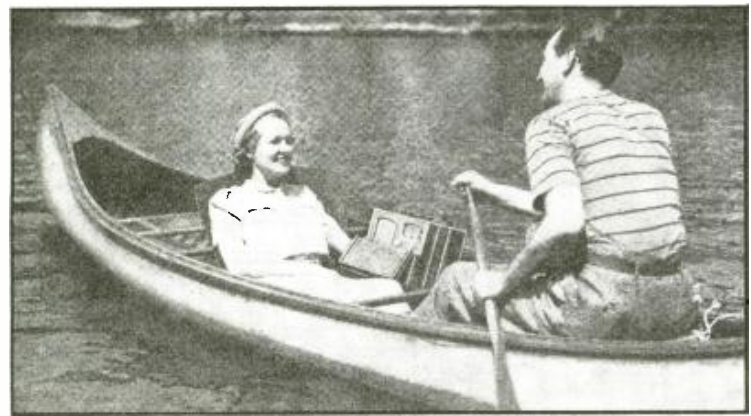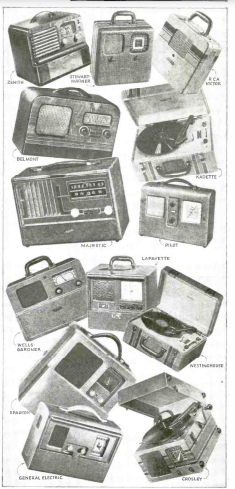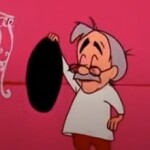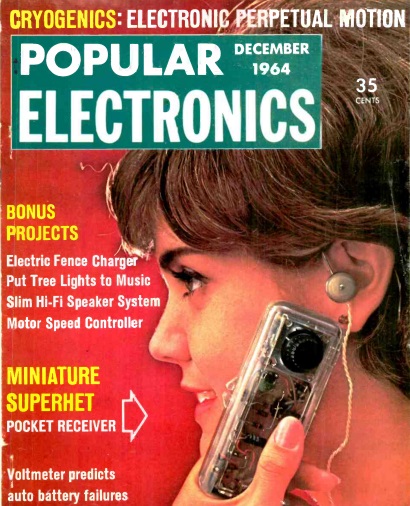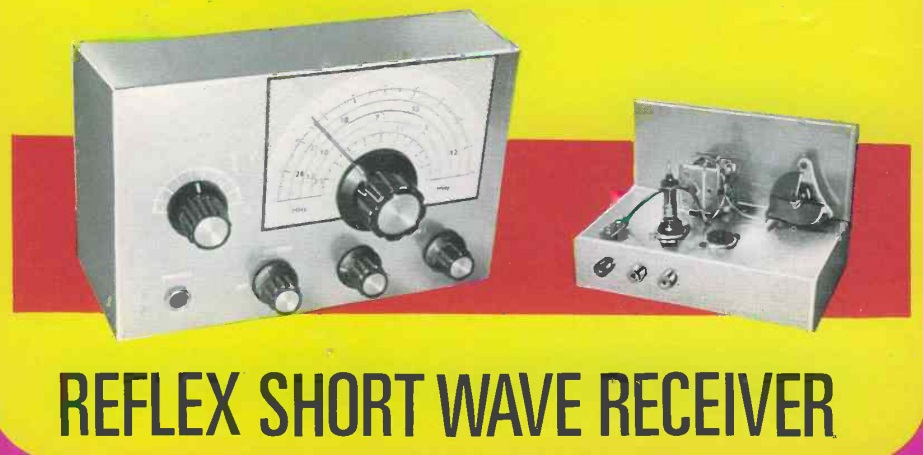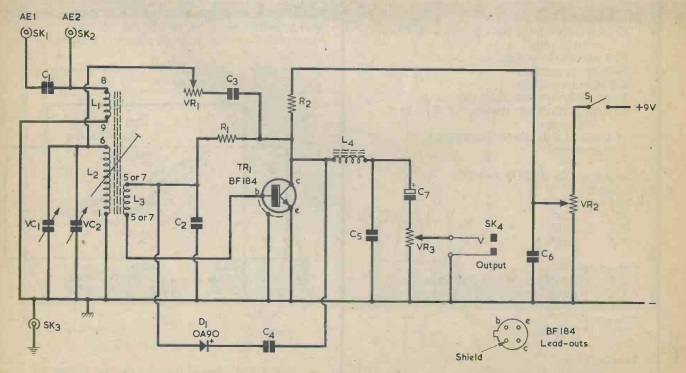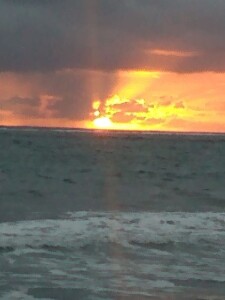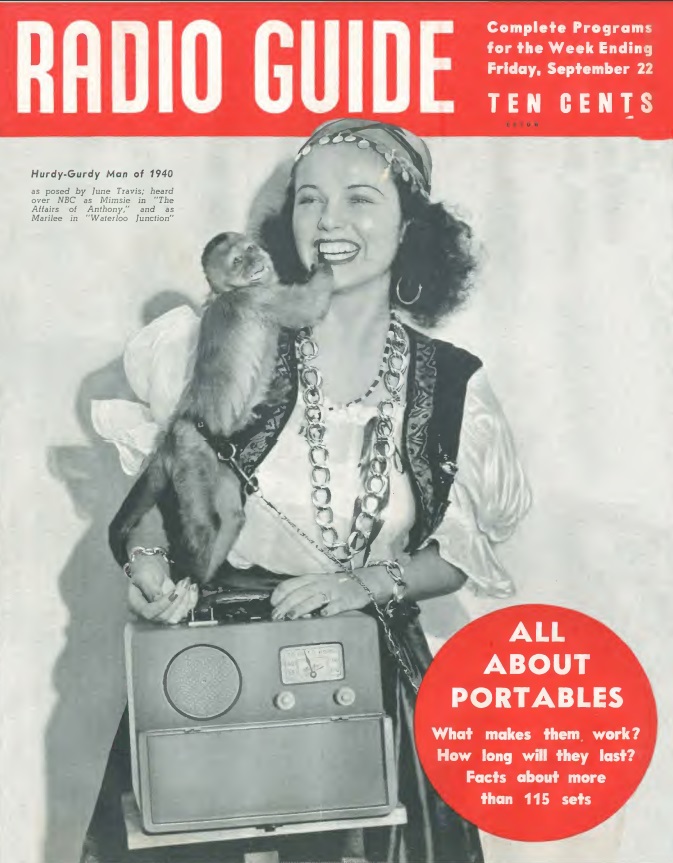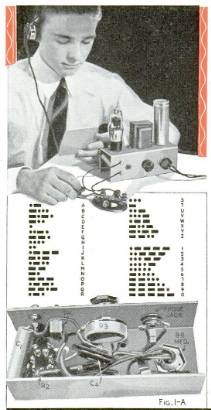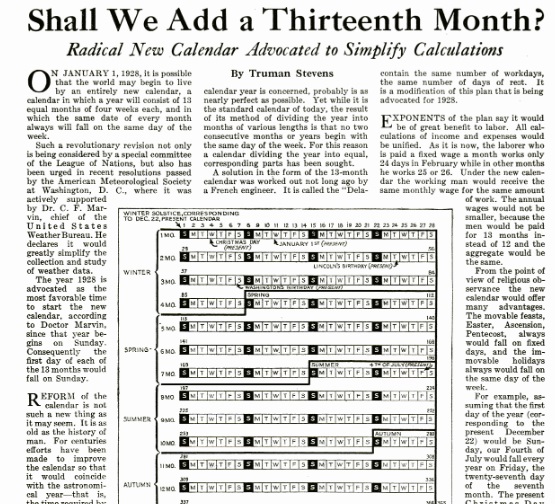 A hundred years ago this month, the September 1924 issue of Popular Science explained another concept that, it turns out, never caught on. In the early 20th Century, there were those who proposed simplifying the calendar. While there were other proposals, the Delaporte calendar is shown here, and the magazine predicted, incorrectly, it turns out, that it might go into effect by 1928.
A hundred years ago this month, the September 1924 issue of Popular Science explained another concept that, it turns out, never caught on. In the early 20th Century, there were those who proposed simplifying the calendar. While there were other proposals, the Delaporte calendar is shown here, and the magazine predicted, incorrectly, it turns out, that it might go into effect by 1928.
The year was divided up into 13 months of 28 days each. Each started on a Sunday. The mathematically astute will realize that this only accounts for 364 days in the year. For that reason, one extra day, which had neither a month nor a day of the week assigned, was tacked on to the end. Every four years, a second such day would be tacked on at the end to account for leap year.
The idea obviously died out without many traces, but the League of Nations was exploring the idea as late as the 1930s. Their files on the subject are available for free download, and are interesting reading. A leading proponent of the idea was George Eastman.
A considerable part of those proceedings involve religious reaction to the idea. It appears that the Roman Catholic church was cool to the idea, but didn’t reject it out of hand. In America, most mainline protestant denominations had no objections, although Jews, Seventh Day Adventists, and Seventh Day Baptists expressed strong opposition.
